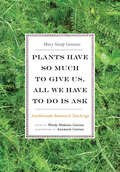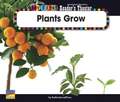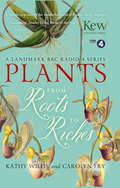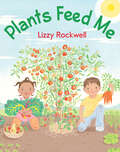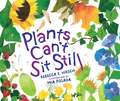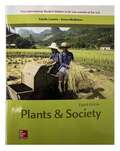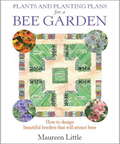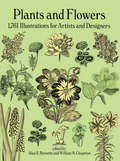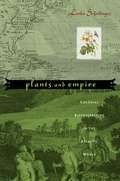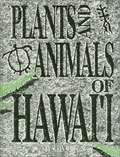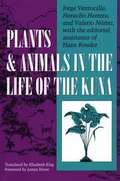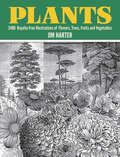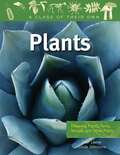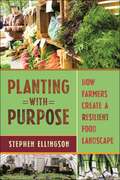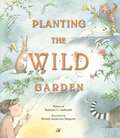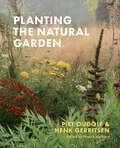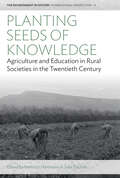- Table View
- List View
Plants Have So Much to Give Us, All We Have to Do Is Ask
by Annmarie Geniusz Wendy Makoons Geniusz Mary Siisip GeniuszMary Siisip Geniusz has spent more than thirty years working with, living with, and using the Anishinaabe teachings, recipes, and botanical information she shares in Plants Have So Much to Give Us, All We Have to Do Is Ask. Geniusz gained much of the knowledge she writes about from her years as an oshkaabewis, a traditionally trained apprentice, and as friend to the late Keewaydinoquay, an Anishinaabe medicine woman from the Leelanau Peninsula in Michigan and a scholar, teacher, and practitioner in the field of native ethnobotany. Keewaydinoquay published little in her lifetime, yet Geniusz has carried on her legacy by making this body of knowledge accessible to a broader audience. Geniusz teaches the ways she was taught--through stories. Sharing the traditional stories she learned at Keewaydinoquay's side as well as stories from other American Indian traditions and her own experiences, Geniusz brings the plants to life with narratives that explain their uses, meaning, and history. Stories such as "Naanabozho and the Squeaky-Voice Plant" place the plants in cultural context and illustrate the belief in plants as cognizant beings. Covering a wide range of plants, from conifers to cattails to medicinal uses of yarrow, mullein, and dandelion, she explains how we can work with those beings to create food, simple medicines, and practical botanical tools. Plants Have So Much to Give Us, All We Have to Do Is Ask makes this botanical information useful to native and nonnative healers and educators and places it in the context of the Anishinaabe culture that developed the knowledge and practice.
Plants: From Roots To Riches
by Kathy WillisOur peculiarly British obsession with gardens goes back a long way and Plants: From Roots to Riches takes us back to where it all began. Across 25 vivid episodes, Kathy Willis, Kew's charismatic Head of Science, shows us how the last 250 years transformed our relationship with plants. Behind the scenes at the Botanical Gardens all kinds of surprising things have been going on. As the British Empire painted the atlas red, explorers, adventurers and scientists brought the most interesting specimens and information back to London. From the discovery of Botany Bay to the horrors of the potato famine, from orchid hunters to quinine smugglers, from Darwin's experiments to the unexpected knowledge unlocked by the 1987 hurricane, understanding how plants work has changed our history and could safeguard our future. In the style of A History of the World in 100 Objects, each chapter tells a separate story, but, gathered together, a great picture unfolds, of our most remarkable science, botany. Plants: From Roots to Riches is a beautifully designed book, packed with 200 images in both colour and black and white from Kew's amazing archives, some never reproduced before. Kathy Willis and Carolyn Fry, the acclaimed popular-science writer, have also added all kinds of fascinating extra history, heroes and villains, memorable stories and interviews. Their book takes us on an exciting rollercoaster ride through our past and future and shows us how much plants really do matter.
Plants Feed Me (Into Reading Texas, Read Aloud Module 8 #1)
by Lizzy RockwellNIMAC-sourced textbook
Plants Feed Me
by Lizzy RockwellSink your teeth into the plants that feed the world—flowers, fruits, seeds, and all! With its simple text and bright, appealing illustrations, this book is perfect for young readers learning about where their food comes from. Clearly-labeled diagrams show the different parts of plants we use and eat—leaves of spinach and cabbage, the roots of carrot plants, and the wide variety of fruits, such as apples, berries, and tomatoes. Plants Feed Me explores the different types of seeds we eat— beans, nuts, rice, and even how wheat is ground into flour and used to make many other types of food. Smiling children pick fruits and vegetables, and learn how plants grow from seeds, stretching toward the sky for sun and into the earth for nutrients. This celebration of fruits, vegetables, and more is sure to get kids interested in what's on their plates!
Plants Everywhere (Fountas & Pinnell Classroom, Guided Reading Kindergarten)
by Madeline HydeNIMAC-sourced textbook
Plants Can't Sit Still
by Rebecca E. Hirsch Mia PosadaDo plants really move? Absolutely! You might be surprised by all ways plants can move. Plants might not pick up their roots and walk away, but they definitely don't sit still! Discover the many ways plants (and their seeds) move. Whether it's a sunflower, a Venus flytrap, or an exotic plant like an exploding cucumber, this fascinating picture book shows just how excitingly active plants really are.
Plants Bite Back!
by Richard PlattAt this level the Readers introduce more complex sentence structures and increased vocabulary. Archive photos and detailed illustrations make the stories exciting for children to read on their own.
Plants And Society
by Estelle Levetin Karen McMahonThis introductory, one quarter/one-semester text takes a multidisciplinary approach to studying the relationship between plants and people. The authors strive to stimulate interest in plant science and encourage students to further their studies in botany. Also, by exposing students to society's historical connection to plants, Levetin and McMahon hope to instill a greater appreciation for the botanical world. Plants and Society covers basic principles of botany with strong emphasis on the economic aspects and social implications of plants and fungi.
Plants and Planting Plans for a Bee Garden: How To Design Beautiful Borders That Will Attract Bees
by Maureen LittleFor many people gardening is predominantly about plants and choosing the right combination and balance to make beautiful borders. This book will help you achieve this - and more, because it will also help you create an ecologically sound, bee-friendly garden, showing that you can have an aesthetically pleasing garden full of beautiful flowers which at the same time will attract and nurture bees. It will enable you to select bee-friendly plants, and to plan borders which are beneficial to bees, encouraging these most valuable of insects to come to your garden over and over again, both for sustenance and to aid pollination. It contains a wide range of practical, beautiful and easy-to-follow planting plans for bee-friendly gardens of all sizes, including: - Traditional mixed, cottage, and colour themed borders - 'Designer' and 'natural' borders - Borders for acid and alkaline soils - Ideas for container planting This book will be of interest to every gardener who cares for the plight of the honeybee and other bees.
Plants and Flowers: 1761 Illustrations for Artists and Designers (Dover Pictorial Archive Ser.)
by Alan E. Bessette William K. ChapmanThis comprehensive archive offers authentically detailed, copyright-free illustrations of hundreds of plants and flowers from around the world. Ideal for graphic artists, designers, and others in the arts and crafts, it will also serve both serious and casual botanists as a convenient reference and key to identification of a broad range of botanical species. Each illustration has been carefully selected from botanical archives for its scientific accuracy, artistic style, and suitability for reproduction. The plants and flowers are grouped by kind, uses, and habitats into seventeen categories, among them aquatic plants, carnivorous plants, grasses, rushes and sedges, orchids, ornamental plants, plants of commerce, mushrooms, molds and lichens, ferns, mosses, trees, shrubs, weeds, wildflowers, and vines. For easy and accurate reference, both common and botanical Latin names are given for each species whenever possible. All names have been compiled into two convenient indexes. Alan E. Bessette, Professor of Biology at Utica College of Syracuse University, is a well-known naturalist, botanical photographer, and author of numerous books and field guides on botanical subjects. William K. Chapman, a biology teacher and member of the adjunct faculty at Utica College, is a well-known speaker and writer on the gathering of wild foods, and the author of field guides to plants and animals of the Adirondacks.
Plants and Empire: Colonial Bioprospecting in the Atlantic World
by Londa SchiebingerPlants seldom figure in the grand narratives of war, peace, or even everyday life yet they are often at the center of high intrigue. In the eighteenth century, epic scientific voyages were sponsored by European imperial powers to explore the natural riches of the New World, and uncover the botanical secrets of its people. Bioprospectors brought back medicines, luxuries, and staples for their king and country. Risking their lives to discover exotic plants, these daredevil explorers joined with their sponsors to create a global culture of botany.
Plants and Empire: Colonial Bioprospecting in the Atlantic World
by Londa SchiebingerPlants seldom figure in the grand narratives of war, peace, or even everyday life yet they are often at the center of high intrigue. In the eighteenth century, epic scientific voyages were sponsored by European imperial powers to explore the natural riches of the New World, and uncover the botanical secrets of its people. Bioprospectors brought back medicines, luxuries, and staples for their king and country. Risking their lives to discover exotic plants, these daredevil explorers joined with their sponsors to create a global culture of botany. But some secrets were unearthed only to be lost again. In this moving account of the abuses of indigenous Caribbean people and African slaves, Schiebinger describes how slave women brewed the "peacock flower" into an abortifacient, to ensure that they would bear no children into oppression. Yet, impeded by trade winds of prevailing opinion, knowledge of West Indian abortifacients never flowed into Europe. A rich history of discovery and loss, Plants and Empire explores the movement, triumph, and extinction of knowledge in the course of encounters between Europeans and the Caribbean populations.
Plants And Animals Of Hawaii
by Susan ScottThis book about plants and animal of Hawai'i was written to inspire more people to become active in the fight to save Hawai'i native species, many of which teeter on the edge of extinction.
Plants and Animals in the Life of the Kuna
by Jorge Ventocilla Heraclio Herrera Valerio Núñez"The earth is the mother of all things"; thus begins this original and accessible book on how the Kuna of Panama relate to the natural world. An integrative project involving Kuna traditional leaders and trained scholars, and fully illustrated by a Kuna artist, this translation of Plantas y animales en la vida del pueblo Kuna focuses on Kuna plant and animal life, social life, and social change as a means of saving traditional ecological knowledge and "returning" it to the community. The authors hope to preserve the Kuna environment not only by reviving traditional technologies but also by educating the Kuna as to what needs protection. While the Kuna have a tradition of living in harmony with the land, the intrusion of the market economy is eroding the very basis of their sustainable way of life. As a response to this crisis, this book seeks to develop native self-awareness and provide a model for collaboration. It will appeal to Latin Americanists, anthropologists, and ethnobotanists, as well as to a general readership in environmental issues.
Plants and Animals in Different Seasons
by Kira Freed Tara FunkLearn how plants and animals change in different seasons.
Plants: 2,400 Royalty-Free Illustrations of Flowers, Trees, Fruits and Vegetables
by Jim HarterHundreds of plant species -- from lilies, lichens, and palms to mushrooms, mosses, and maples -- supplemented by appendices on edible plants, medicinal herbs, and plants used in decoration and in graphic design. Indispensable source of inspiration and royalty-free graphics for designers and artists; a captivating compendium for botanists, gardeners, and collectors of old engravings.
Plants: Flowering Plants, Ferns, Mosses, and Other Plants (Class of Their Own)
by Shar LevineThe plant kingdom contains more than 250,000 species. With green pigment called chlorophyll in some cells, these organisms have the unique ability to make their own food. <p><p>This colorful book describes the main groups of plants, including mosses, ferns, conifers, and flowering plants. Special sections highlight the role of plants in the environment as producers in the food chain and producers of the worlds oxygen and their role in climate and the water cycle. Case histories include the discovery of a new species of conifer tree in Australia and special cases of plant breeding.
Plants: From Roots To Riches
by Kathy WillisOur peculiarly British obsession with gardens goes back a long way and Plants: From Roots to Riches takes us back to where it all began. Across 25 vivid episodes, Kathy Willis, Kew's charismatic Head of Science, shows us how the last 250 years transformed our relationship with plants. Behind the scenes at the Botanical Gardens all kinds of surprising things have been going on. As the British Empire painted the atlas red, explorers, adventurers and scientists brought the most interesting specimens and information back to London. From the discovery of Botany Bay to the horrors of the potato famine, from orchid hunters to quinine smugglers, from Darwin's experiments to the unexpected knowledge unlocked by the 1987 hurricane, understanding how plants work has changed our history and could safeguard our future. In the style of A History of the World in 100 Objects, each chapter tells a separate story, but, gathered together, a great picture unfolds, of our most remarkable science, botany. Plants: From Roots to Riches is a beautifully designed book, packed with 200 images in both colour and black and white from Kew's amazing archives, some never reproduced before. Kathy Willis and Carolyn Fry, the acclaimed popular-science writer, have also added all kinds of fascinating extra history, heroes and villains, memorable stories and interviews. Their book takes us on an exciting rollercoaster ride through our past and future and shows us how much plants really do matter.
Plantology: 30 Activities and Observations for Exploring the World of Plants (Young Naturalists)
by Michael Elsohn RossDID YOU KNOW...Scientists believe that mosses, the first plants, may have changed the Earth's climate from hot to cold by removing carbon dioxide from the atmosphere?Many members of the cabbage family release a poison "mustard" gas to fend off grazers?Plants are used in thousands of industries, from low-cost sewage treatment to new medical cures?Young nature enthusiasts will learn these and other fascinating facts about plants in this colorful, interactive resource. Plantology contains fun, kid-friendly discussions and activities to explore many topics—from seeds, roots, and sprouts to plant skeletons, leaves, petals, and fruits. It then goes beyond the basics to delve into the unknown world of common weeds, fascinating plant defense systems, and the countless roles plants play in our lives. With encouragement to "Try This," "Smell It," and "Look For," kids participate in 30 hands-on activities that promote observation and analysis, writing and drawing, math and science, and nature literacy skills. Children will keep a journal, examine and sketch plant structures, start a seed collection, make tasty vegetarian dishes, and more. Readers from any environment will start to notice the plants around them—not just in parks, gardens, and woods but also surrounding the schools, buildings, and sidewalks of their town, and in their own backyards. Useful resources include a glossary of scientific terms, a list of nature organizations and groups, and a teacher's guide to initiate classroom discussion and investigation.
Planting With Purpose: How Farmers Create a Resilient Food Landscape
by Stephen EllingsonExamines local food movement activism in a period of increasing climate chaos and neoliberal crisis, economic inequalities and political divisionsIn the face of numerous challenges, small-scale farming for local markets requires enormous courage and optimism. The decision to become a farmer often arises from a profound desire to uphold certain values and beliefs, driven by the moral and emotional motivations to contribute to a greater good.Central New York’s local food market draws a unique cohort of individuals who see farming as more than just a livelihood; it is a way to define a good life and contribute to the well-being of the society they cherish. Their moral order revolves around shared beliefs in sustainability and stewardship of the land, emphasizing health and risk management, cooperation over competition, and a deep sense of justice. For these farmers, relationships and family ties are foundational to their work, creating a strong sense of community within the local food system.This book delves into the captivating world of local food markets in a “Rust Belt” region of the state, where 51 individuals representing 45 different farms, restaurants, agricultural non-profits, and local food retailers share their inspiring stories through conversations and interviews. Author Stephen Ellingson explores the intricate web of moral commitments, self-understandings, and emotional experiences that drive and sustain small-scale farming for the local food market. By amplifying the voices of these unsung heroes, it gives recognition to the crucial role they play in society and offers important insights into the values that underpin their contributions to the local food system.
Planting the Natural Garden
by Piet Oudolf Henk Gerritsen“If the world of gardening has rock stars, Piet Oudolf qualifies as Mick Jagger, David Bowie, and Prince rolled into one.” —Gardenista The original publication of Planting the Natural Garden ushered in a revolution in landscape design: the New Perennial Movement. Spearheaded by internationally renowned designer Piet Oudolf, and incisively articulated by the late plantsman and designer Henk Gerritsen, it transformed private and public spaces with its emotionally resonant, naturalistic use of hardy perennials and grasses. Now this classic has been expanded and updated to include scores of new plants and combinations. Packed with practical information and visual inspiration, Planting the Natural Garden zeroes in on the New Perennial Movement’s power to move us, making its distinctive plant palette available to all. For enthusiasts of these vibrant landscapes, it is an essential text; for gardeners who love the dreamy moods and colors that Oudolf and Gerritsen celebrate, it’s the key to a magic kingdom of garden beauty.
Planting Seeds of Knowledge: Agriculture and Education in Rural Societies in the Twentieth Century (Environment in History: International Perspectives #24)
by Heinrich Hartmann Julia TischlerIn the late nineteenth and early twentieth centuries, agricultural practices and rural livelihoods were challenged by changes such as commercialization, intensified global trade, and rapid urbanization. Planting Seeds of Knowledge studies the relationship between these agricultural changes and knowledge-making through a transnational lens. Spanning exchanges between different parts of Europe, North and South America, the Indian subcontinent, and Africa, the wide-reaching contributions to this volume reform current historiography to show how local experiences redefined global practice.
